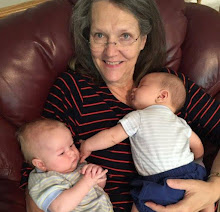 ORIGIN: Gravesend, Kent
ORIGIN: Gravesend, KentMIGRATION: 1629
FIRST RESIDENCE: Charlestown
RETURN TRIPS: Apparently left New England in 1633
OCCUPATION: Engineer. On 10 March 1628/9, Thomas Graves of Gravesend, Kent, gent., signed a contract with the Massachusetts Bay Company, in which he claimed to be skilled in the discovery of mines, in "fortifications of all sorts," in surveying, and in various other similar specialties [MBCR 1:30, 32-33, 390-91; Young's First Planters 53-54, 56-59, 152-54].
FREEMAN: 18 May 1631 (as "Mr. Tho: Graves") [MBCR 1:366].
EDUCATION: Clearly a well-educated man, given the wide range of his skills, but he did not attend Oxford or Cambridge. He was said to have travelled widely [Young's First Planters 153]. He wrote a brief letter back to England about his early assessment of New England [Higginson 109].
OFFICES: Appointed commissioner to act with Endicott and to assist him in military matters, 17 April 1629 [MBCR 1:37j, 361, 387; Young's First Planters 144, 194].
ESTATE: 6 March 1632/3: A committee appointed by the General Court agreed "that all the ground impaled by Newtown [i.e., Cambridge] men, with the neck whereon Mr. Graves his house standeth, shall belong to Newtown ..." [MBCR 1:102]. This land was long known as Graves Neck, and is the area now referred to as Lechmere Point.
MARRIAGE: In his contract, asked to have Company pay costs of transporting his wife, five children, and two servants [MBCR 1:32-33; Young's First Planters 58].
CHILDREN: Five children, as noted immediately above; no certain evidence that wife or children actually came to New England.
COMMENTS: This Thomas Graves, the engineer, is frequently confused with Mr. Thomas Graves, shipmaster, who later settled in Charlestown. This second Thomas Graves made frequent voyages across the Atlantic, bringing passengers from England. He settled in Charlestown about 1639, and returned to England to participate in the Civil War, where he attained the rank of Rear Admiral [TAG 32:14]. Frothingham makes a careful distinction between the two, and cements his case by reproducing the very different signatures of the two men [Frothingham 139-40]. From Francis Higginson's account, it would appear that the second Thomas Graves was master's mate on the Talbot, which brought Higginson and Thomas Graves the engineer to Salem in 1629 [Higginson 119].
In the list of those admitted as inhabitants of Charlestown in 1629 we find "Mr. Graves who had charge of some of the servants of the Company of Patentees with whom he built the great house this year for such of the said Company as are shortly to come over which afterwards became the meeting house" [ChTR 3]. Charlestown agreed with Mr. Graves to "model & lay out the form of the town with streets about the hill which was accordingly done and approved of by the Governor" [ChTR 3]. Thomas Graves does not appear in the list of inhabitants of Charlestown of 9 January 1633/4, nor in the various grants of land in the years immediately following, so he presumably departed from Charlestown (and from New England) sometime during 1633.
Winthrop tells a strange story which may relate to this man: "Mr. Thomas Graves, a member of Dorchester, and a very understanding man, would needs leave the church, and go to Virginia against all counsel, etc. He and his wife and divers of his children died, and his whole family was ruined about a year after. Only one daughter escaped, who, being left a maid with a good estate, married after to that apostate, Nathaniel Eaton, who, having spent all she had, fled away, and left her miserable, 1646" [WJ 2:342]. Winthrop does not date this entry, so we do not know just when this Thomas Graves is supposed to have gone to Virginia. It certainly cannot be the shipmaster of Charlestown, and there is no record of a Mr. Thomas Graves of Dorchester in Massachusetts (unless Thomas Graves the engineer joined the Dorchester church in the earliest years, for which we have no records). The father of the woman who married Nathaniel Eaton was a Thomas Graves who arrived in Virginia in 1608, and is well-documented there right down to his death in late 1635 or early 1636, so he cannot be the engineer [Virginia M. Meyer and John Frederick Dorman, eds., Adventurers of Purse and Person, 3rd ed. (Richmond VA 1987), pp. 325-28].
Winthrop has probably confused two stories. Quite possibly Thomas Graves the engineer departed Charlestown in 1633, and headed south, for Virginia or one of the Caribbean Islands, and soon lost his family and estate; and when Winthrop heard of Eaton's activities in Virginia he recalled this Thomas Graves and combined this story with the father of Nathaniel Eaton's wife, of whom he had no independent information. In one story, then, Winthrop could moralize about two men who had abandoned New England and suffered in consequence.
Ancestry Chain: Thomas GRAVES Immigrant (1585-1662) wife Sarah WHITING (1581/1606-1666) -son- Lt./Sgt. Isaac GRAVES 1629 child immigrant (1620-1677), John GRAVES b.1664, Isaac GRAVES b.1688, Jerusha GRAVES b.1717, Jerusha COOLEY b.1738, Sylvanus BRONSON b.1769, Mary BRONSON b.1806, Martin Luther ENSIGN b.1831, Harriett Camilla ENSIGN b.1859, George Ensign SMITH b.1898, Camilla SMITH b.1926, Lark, TR.


No comments:
Post a Comment